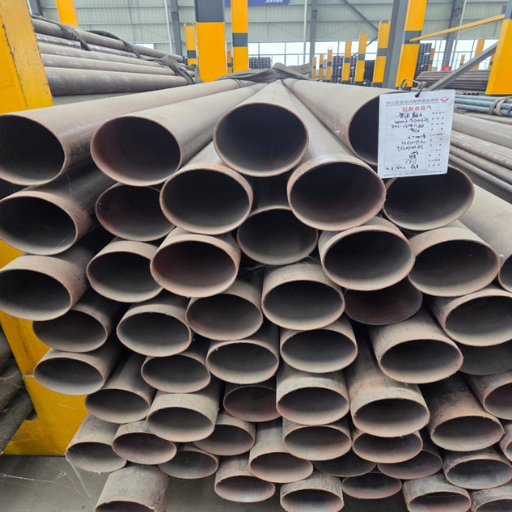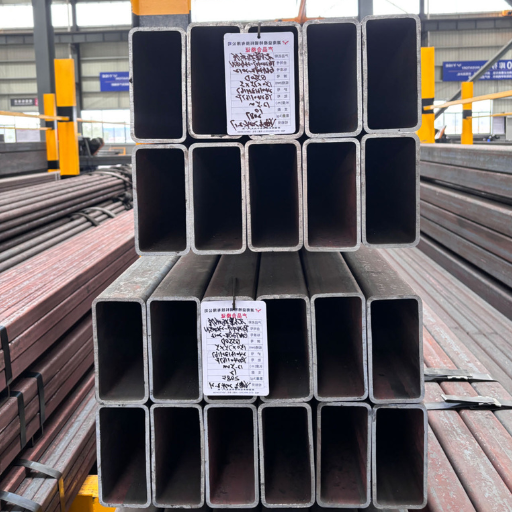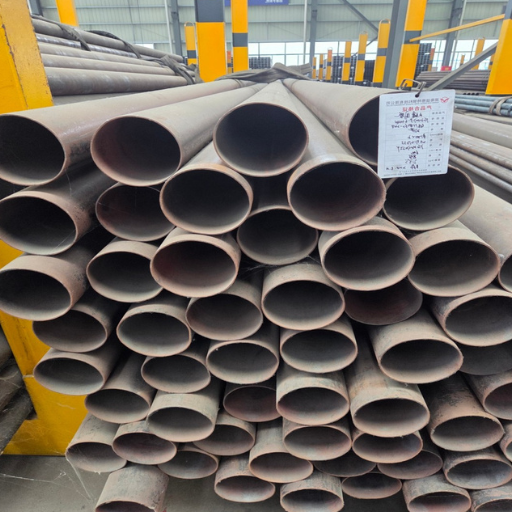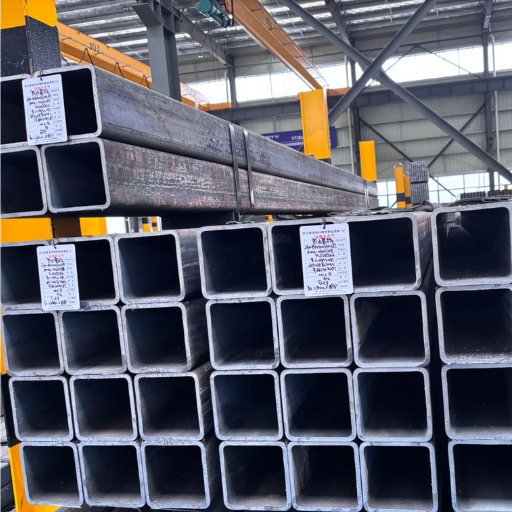-
 Melody
Hi there! Welcome to my shop. Let me know if you have any questions.
Melody
Hi there! Welcome to my shop. Let me know if you have any questions.
Your message has exceeded the limit.

What Is the Difference Between Seamless and Non-seamless Pipe?
2025-10-14 14:21:08
In the case of piping in industrial applications, it is essential to know the characteristics of seamless, non-seamless (also, welded) pipes to select the proper material for your project. The type of pipe you choose can significantly impact the safety, efficiency, and economic viability of your operations, whether in the construction, manufacturing, or oil and gas sectors. The article goes into the most critical differences between seamless and non-seamless pipes, their respective manufacturing methods, advantages, and perfect applications. By the end of the article, you will have a clear option for your particular needs, enabling you to make a wise decision.
Understanding Seamless and Welded Pipes

Seamless pipes, in particular, are produced without welded joints, which makes them suitable for any arrangement that demands very high pressure or strength. They are formed by pushing a solid lump of steel through a die to get a cylinder shape, which guarantees equal quality and longevity. In contrast, welded pipes are made by taking steel sheets, rolling them, and fusing them, thus creating a longitudinal seam. Such pipes are less expensive and more appropriate for low-pressure use. The decision to go for seamless or welded pipes is generally a matter of cost, pressure criteria, and the particular use.
Definition of Seamless Pipes
Seamless pipes are defined as pipes that are manufactured without the use of a welded seam or joint. This means the pipes have a uniform strength and the same quality along the whole length. The method of manufacturing these pipes is known as extrusion, where a solid steel billet is first heated, and then it is pushed or pulled over a form until the desired pipe shape is achieved. This process is applied to the product, making it strong and free of weak points that might compromise its structural integrity.
Another major benefit of seamless pipes is their ability to operate under much higher pressure, making them the first choice for critical applications in the oil and gas, power generation, and chemical processing industries. Recently, industry standards have indicated that seamless pipes can bear the pressure ranges of 20,000 psi or more, depending on the material grade and wall thickness.
Besides, they are also remarkably resistant to corrosion and cracking, even in extreme temperature and pressure environments. According to studies in materials science, seamless pipes have significantly better fatigue strength than welded pipes, thus providing welded pipes a longer operational life in harsh environments.
Seamless pipes are used in pipelines, boilers, automobiles, and hydraulic systems. They are offered in diverse sizes and grades, including carbon steel, stainless steel, and alloy steel, to meet the varying needs of industries. The exact measurements of seamless pipes conform to standards such as ASTM, ASME, and API, ensuring high quality and consistency in performance.
In conclusion, seamless pipes are the perfect combination of reliability and cost-effectiveness for critical applications that require high durability, performance, and safety.
Definition of Welded Pipes
Welded pipes are created by welding different segments of steel plates or strips and then forming them into a tube. Depending on the application and requirements, the welding process can choose from a variety of methods such as Electric Resistance Welding (ERW), Longitudinal Submerged Arc Welding (LSAW), or Spiral Submerged Arc Welding (SSAW). Pipelines without seams, which are created by extrusion, are different from welded pipes in that the latter use welding to attach the edges of the steel to make a tube.
One of the main advantages that welded pipes have is their low price and high volume of manufacturing, which makes them applicable over a wide range of different industries. They can be produced in various sizes, with diameters ranging from 1/2 inch to more than 100 inches. Welded pipes are primarily used in the industry as transport lines for liquids and gases, and also in structural applications where high-pressure resistance is not a primary factor.
Pipes produced by welding technology have become very strong and reliable due to modern advancements in this field. For instance, high-frequency welding techniques applied in ERW cause a smooth and consistent weld bead. Pipe materials made with welding still meet the world standards like ASTM A312 (stainless steel pipes) and API 5L (line pipes for oil and gas industries), thus guaranteeing quality and safety.
The latest reports indicate the escalating global demand for welded pipes, particularly in the oil and gas, water distribution, and construction sectors. It is estimated by market reports that the global welded steel pipe market size in 2022 was around $61 billion and that it will be growing at a compound annual growth rate (CAGR) of 4.3% from 2023 to 2030 which is mainly due to the expanding infrastructure and energy needs. Therefore, this growth reflects the indispensable position that welded pipes occupy in modern industries.
Key Characteristics of Seamless vs Welded Pipes
Characteristic | Seamless Pipe | Welded Pipe |
|---|---|---|
Manufacturing Process | Extruded from a solid billet | Rolled and welded from steel strip |
Seam | None | Weld seam present |
Strength | Uniform throughout | Slightly weaker at the weld seam |
Pressure Rating | Higher, especially in thin walls | Lower in high-pressure applications |
Corrosion Resistance | Superior due to no seam | Susceptible at the weld seam |
Cost | More expensive | More affordable |
Size Availability | Limited to smaller sizes | Wide range of sizes |
Lead Time | Longer | Shorter |
Inspection | Not required for seams | Weld seam requires testing |
Applications | High-pressure, critical systems | General, low-to-medium pressure systems |
Manufacturing Processes

The production of seamless and welded pipes commands different approaches, each with its own set of pros, depending on the application's needs.
Seamless Pipes
The seamless pipes have a non-welding process, which results in a product with no seam or joint. The process starts with a solid round steel piece called a billet. The billet is then heated to high temperatures and pierced with a mandrel in the middle. The outcome is a hollow tube that is then pulled and rolled till it attains the required diameter and thickness.
One of the main focuses of seamless pipes is their outstanding strength and ability to withstand pressure, which makes them perfect for use in high-pressure areas. The industry claims that seamless pipes are responsible for 40% of the world's total pipe production with no decrease in demand in oil and gas cutting-edge sectors, chemical industries, and power generation.
Welded Pipes
Welded pipes are the opposite—by turning a flat steel plate or strip into a cylindrical shape and welding the edges. Various welding techniques, for example, Electric Resistance Welding (ERW), Longitudinal Submerged Arc Welding (LSAW), and Spiral Submerged Arc Welding (SSAW), can be used in this process.
In general, welded pipes are cheaper to produce than seamless pipes due to their more straightforward and more productive manufacturing process. These pipes are also used in lower-pressure applications like water supply, construction, and the like. Recent figures indicate that approximately 60% of the world’s pipes are of the welded type, this is due to the rapid rate of urbanization and infrastructure development on a global scale.
Technological Advancements
Recent advancements in manufacturing technologies have made both seamless and welded pipes more efficient and reliable. For example, automated welding technologies and non-destructive testing (NDT) methods have greatly improved the uniformity and quality of welded pipes. Likewise, advances in piercing and extrusion methods have improved the precision of seamless pipes, allowing for tighter tolerances and superior performance in critical applications.
These advancing technologies, alongside a promising worldwide market forecast, underscore the significant part traditionally played by seamless and welded pipes in catering the world’s industrial and infrastructural needs.
Manufacturing Process for Seamless Steel Pipe
The seamless steel pipes manufacturer follows a complex process consisting of various phases that contribute to the pipes' high strength, accuracy, and performance. Here is a brief presentation of the main steps involved in the process:
1. Billet Preparation
First, through the transition discussed above, solid billets of cylindrical steel are selected and prepared. Such a solid steel cylinder (billet) is thoroughly examined to ensure it satisfies the necessary chemical composition and quality constraints. The source of solid steels usually consists of top-grade carbon steel or alloy steel.
2. Heating
After this, the steel billet is placed in a rotary hearth furnace and heated to between 1,200 and 1,300 degrees Celsius (2,192 and 2,372 degrees Fahrenheit). It is essential to heat the steel to such high temperatures that the resulting softness of the steel will allow it to be processed further during the following steps.
3. Piercing
A rotary piercing mill is used to pierce the heated billet in the middle and convert it into a hollow shell. This very important step employs the Mannesmann piercing process, among others, and assures that the thickness is even throughout and that there are no surface flaws. With the help of modern piercing techniques, the production tolerances can be as tight as ±0.5%.
4. Rolling and Elongation
The hollow shell will be subjected to rolling through elongation mills such as plug mills or mandrel mills. In this phase, the pipe is longitudinally stretched and reduced to the final diameter and wall thickness. Depending on the specifications, advanced, computer-controlled rolling systems will guarantee the constant achievement of precise dimensions.
5. Sizing and Stretch Reducing
The pipe is then transferred for further treatment through sizing and stretch-reducing mills, where it passes through the dimensional accuracy refinement stage. Sizing mills have the potential to bring the pipe tolerances down to ±0.1 mm. As a result, the entire procedure guarantees the pipes' compliance with strict industry standards, such as those of ASTM or ISO, concerning shapes and sizes.
6. Heat Treatment
To enhance material characteristics such as strength, ductility, and toughness, the pipes undergo heat treatment operations, including annealing, normalizing, quenching, and tempering. These methods progressively alter the internal microstructure of the steel.
7. Nondestructive Testing (NDT)
Each seamless pipe, after its formation, undergoes a series of strict nondestructive testing (NDT) procedures, such as ultrasonic or eddy current testing, to detect cracks, defects, or inconsistencies. This 200-year process guarantees the high reliability for critical applications such as oil and gas pipes or pressure vessels.
8. Cutting and Finishing
The pipes are cut to specified lengths using high-precision cutting tools. Then, finishing operations such as threading or beveling may take place, and anti-corrosion coatings, depending on the final application, may also be applied.
9. Final Inspection
Before being sent to customers, the end-product seamless pipes will undergo dimensional, mechanical, corrosion, and aesthetic quality checks per the required standards.
Global Seamless Pipe Market Data
Market Value: At the end of the decade, the global seamless pipe market is projected to grow by a significant $70 billion, driven by demand from the construction, oil, gas, and automotive industries, which are the primary factors in the market's growth.
Demand Insights: In the world of seamless pipes, the oil and gas sector is considered the largest consumer with a share exceeding 50%, especially in North America and the Middle East regions.
Technology Trends: Innovations like laser-guided rolling and IoT-enabled monitoring have not only increased production but also made it more dependable.
Seamless pipes are increasingly used in applications requiring high temperature and pressure resistance due to their properties, such as high strength and resistance to deformation.
Manufacturing Process for Welded Steel Pipe
The whole manufacturing system of welded steel pipe includes several vital steps, which need to be followed to the letter to produce a pipe with the best quality and durability. The five primary stages of production are as follows:
Steel Coil Preparation:
The very first step of the process is the inspection of steel coils, which are checked for quality and defects. Then, the coils are unrolled and cut to the desired widths based on the specifications of the pipe.
Edge Milling:
Now, the edges of the strip are cut and beveled to ensure proper alignment and a strong weld. This process also removes any surface irregularities and prepares the edges for welding.
Forming:
The strip is rolled or pressed into a circular shape so that the edges of the steel strip overlap, creating a seam that will be welded later.
Welding:
The cylinder's edges are heated and then fused using one of the following methods: electric resistance welding (ERW) or submerged arc welding (SAW). The choice of the method depends on the type and application of the pipe. At this stage, the seam gets its strength and durability.
Non-Destructive Testing (NDT):
Welding is followed by testing of the pipes without destroying them. The methods for non-destructive testing include ultrasound and X-ray techniques which are used to look for defects both inside and outside the weld seam.
It is the combination of all these stages that is responsible for the welded steel pipe's structural integrity and its ability to hold up when used in different industrial applications.
Electric Resistance Welded (ERW) and Submerged Arc Welded (SAW) Techniques
Characteristic | ERW (Electric Resistance Welded) | SAW (Submerged Arc Welded) |
|---|---|---|
Welding Process | High-frequency electric resistance | Submerged arc welding with flux |
Seam Type | Longitudinal | Longitudinal or spiral |
Surface Quality | Smooth and uniform | Internal and external weld reinforcement |
Defect Types | Fewer, easier to detect | More, including volume defects |
Residual Stress | Lower residual stress | Higher residual stress |
Strength | Consistent along the seam | May vary at weld points |
Applications | Oil, gas, and general pipelines | Pressure vessels, large-diameter pipes |
Cost | More economical | Higher for large-diameter pipes |
Size Range | Limited to smaller diameters | Suitable for larger diameters |
Durability | High, less prone to stress corrosion | May face stress corrosion at welds |
Applications of Seamless and Welded Pipes

Pipes, both seamless and welded, play a key role in various industries due to their strength, durability, and versatility. Here are the five major applications of seamless and welded pipes:
Oil and Gas Industry:
Seamless and welded pipes play a significant role in oil, gas, and refined products transportation. They are indispensable for pipelines and rigs because of their ability to endure high pressures and extreme environments.
Construction and Infrastructure:
The pipes are utilized for structural applications such as columns, scaffolding, and piling. In high-stress applications, seamless pipes are the usual choice, while welded pipes are the preferred ones for lower-stress structural applications.
Power Generation:
In thermal and nuclear power plants, seamless pipes are utilized in boiler systems to withstand extreme temperatures and pressures. Welded pipes are also involved in auxiliary systems and cooling lines.
Automotive and Aerospace Industries:
Seamless pipes are used in high-precision components such as fuel injection systems and hydraulic lines because of their uniform strength and high performance under pressure. Meanwhile, welded pipes are the choice for non-critical systems because of their cost-effectiveness.
Chemical and Petrochemical Industries:
The use of seamless and welded pipes is essential in chemical transportation and processing. Their ability to resist corrosion and handle aggressive chemicals helps in maintaining operational safety and equipment longevity.
All these applications demonstrate the necessity of seamless and welded pipes in promoting industrial and commercial activities worldwide.
Use in the Oil and Gas Industry
Seamless and welded tubes are the mainstays of the oil and gas industry, primarily due to their incredible durability, reliability, and compatibility with extreme conditions. Here is a comprehensive enumeration of their various uses in this industry:
Drilling Operations: Seamless tubes are a significant part of drilling rigs, used to transport drilling fluids and support the casings of wells. Their high strength and ability to withstand great pressure make them very suitable for this operation.
Pipeline Infrastructure: Welded tubes are a common choice for the long-haul transport of crude oil and natural gas. Their economic aspect and availability in large diameters make them perfect for the secure transport of large quantities of hydrocarbons.
Refinery Processes: The refineries need pipes that can withstand high temperatures and chemical resistance. Both types of pipes (seamless and welded) are used for transferring fuels and byproducts during refining processes; thus, achieving efficiency and safety.
Subsea Applications: The offshore oil and gas upturns require pipes that can bear high pressure and also withstand the corrosion caused by the sea's cruel environment. This is why seamless pipes are the first choice for offshore pipelines, as they can withstand these tough conditions.
Storage and Distribution Systems: Welded tubes are a significant component in the construction of storage tanks and distribution systems for oil and gas. They not only provide cost savings but also ensure supply chains are secured by maintaining the structural integrity of the pipes.
Each application illustrates how indispensable seamless and welded pipes are to the oil and gas industry for efficient and secure operations through its varied systems.
Typical Applications of Seamless Pipes
Oil and Gas Exploration and Production: Seamless pipes are indispensable in upstream oil and gas operations, including drilling and thriving completion. They are used in casing, tubing, and drill pipe applications because of their high strength and ability to handle extreme temperatures and pressures.
Power Generation: Seamless pipes are commonly used in power generation, particularly in high-pressure applications such as boilers and superheaters. They prevent thermal and nuclear power stations from shutting down due to their resistance to heat and corrosion.
Chemical and Petrochemical Industries: Seamless pipes are the only means of transporting corrosive chemicals and gases safely. Their longevity and ability to withstand extreme conditions make them suitable for reactors, heat exchangers, and processing plants.
Automotive and Mechanical Engineering: Seamless pipes find applications in the automotive and manufacturing industries for parts like axles, gas cylinders, and rollers. The uniformity of their structure and high strength-to-weight ratio not only ensures but also enhances the performance and reliability of the products.
Aerospace and Defense: Seamless pipes are of utmost importance in aerospace and defense applications, where they bring precision and strength to hydraulic systems, fuel lines, and structural components. The same lightweight yet durable attributes that make them critical in demanding environments also make them ideal for aerospace and defense applications.
Common Applications of Welded Pipes
Oil and Gas Industry: Welded pipes are preferred for the movement of oil, gas, and other fluids because of their cost-effectiveness and the large sizes in which they can be produced. They are the first thing that comes to mind when one thinks of pipelines and the industry where pipelines, refineries, and distribution networks are built.
Water and Sewage Systems: On the one hand, welded pipes are the basic elements of the water distribution system that a city uses; on the other hand, they are the basic elements of the sewage disposal system. Their high-pressure handling and corrosion resistance make them trustworthy partners in this kind of infrastructure.
Construction and Infrastructure: Scaffolding, structural supports, and frameworks are largely made out of welded pipes in construction works. The combination of their versatility and low cost makes them the choice for large-scale developments.
Automotive Industry: Welded pipes are used in exhaust systems, hydraulic systems, and various structural components of vehicles. The balance between the strength and cost-efficiency of welded pipes has been determined by mass production in the automotive sector.
HVAC and Fire Protection Systems: HVAC (heating, ventilation, and air-conditioning) systems, along with fire sprinkler pipelines, rely on welded pipes. Their long-lasting quality and easy-to-manufacture characteristics are essential for the safety and comfort provided by the buildings.
Tags: What is the difference between seamless and non-seamless pipe?


